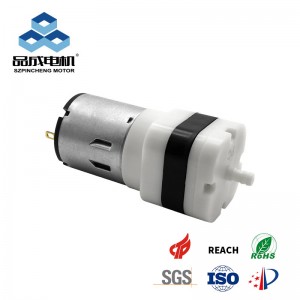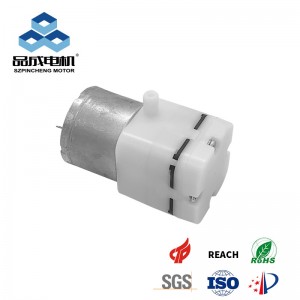Micro diaphragm vacuum pumps are vital for medical devices, lab equipment, and industrial automation. But when deployed in high-altitude regions (e.g., plateaus or mountains), where atmospheric pressure drops significantly, engineers face critical questions about their performance. Let’s demystify the science and solutions.
The Physics: How Altitude Affects Vacuum Pump Performance
At sea level, standard atmospheric pressure is ~101.3 kPa. At 3,000m elevation, it drops to ~70 kPa—reducing by ~30%8. This impacts pumps in two ways:
-
Reduced Maximum Vacuum:
A pump rated for -80 kPa at sea level generates just -50 kPa at 3,000m because vacuum is measured relative to ambient pressure. For example:*A pump achieving -70 kPa (relative) in Chengdu (96 kPa) would deliver only -66 kPa in Guangzhou (100 kPa)*8.
-
Flow Rate Decline:
Lower air density reduces gas molecules per volume, slowing evacuation. A pump with 25 L/min flow at sea level may drop to ≤18 L/min at 4,000m8.
Real-World Performance Data
| Parameter | Sea Level (0m) | 3,000m Altitude | Change |
|---|---|---|---|
| Ambient Pressure | 101.3 kPa | 70 kPa | ↓31% |
| Max. Achievable Vacuum | -80 kPa | -50 kPa | ↓37.5% |
| Flow Rate | 25 L/min | 17 L/min | ↓32% |
| *Data sourced from industrial testing of diaphragm pumps like HAD-PC3025N8.* |
Critical Takeaway: While pumps still operate, vacuum depth and speed decrease proportionally to altitude.
Operational Risks in Low-Pressure Environments
-
Cavitation:
Rapid pressure drops in pump chambers vaporize trapped fluids, creating bubbles that implode—eroding diaphragms and valves. This worsens at low ambient pressures25. -
Overheating:
Thinner air reduces cooling efficiency, raising motor temperatures by 15–20% and accelerating wear6. -
Seal Leaks:
Pressure differentials strain seals, increasing failure risks in critical applications like medical suction4.
Engineering Solutions for High-Altitude Reliability
1. Altitude-Compensated Designs
-
Pressure Sensors + PID Control:
Pumps like KNF N816 use real-time feedback to adjust motor speed, maintaining stable vacuum despite pressure shifts4. -
Multi-Stage Pumping:
Two-stage models (e.g., HG-30D) split pressure reduction, sustaining deeper vacuum (-95 kPa) even at 4,000m7.
2. Critical Component Upgrades
-
Reinforced Diaphragms:
PTFE or EPDM membranes resist cavitation damage and flex fatigue36. -
Thermal Management:
Brushless DC motors (e.g., VAP2300) reduce heat generation, while heat sinks dissipate excess warmth6.
3. System-Level Protections
-
Buffer Tanks:
Dampen pressure pulsations, cutting flow instability by >40%2. -
Inlet Filters:
Block dust common in arid high-altitude regions, preventing valve clogging3.
Proven Applications in Low-Pressure Zones
-
Tibetan Medical Clinics:
Portable suction devices using 2-stage diaphragm pumps maintain -60 kPa for wound therapy at 4,500m7. -
Andean Environmental Sensors:
Gas samplers with altitude-compensated pumps (e.g., KVP300) achieve consistent flow for CO₂ monitoring1. -
Aerospace Testing:
Vacuum chambers simulating 10,000m rely on multi-stage pumps with <5% performance drift8.
Key Selection Criteria for High-Altitude Use
-
Vacuum Stability Tolerance:
Specify pumps rated for <±2% drift across pressure ranges (e.g., KNF LabVAC series)4. -
Certifications:
IP54 sealing (dust/moisture resistance) and -20°C to 50°C operating range68. -
Data Transparency:
Request manufacturer test reports showing performance at simulated altitudes (e.g., 0–5,000m).
Conclusion: Yes, with Smart Engineering
Micro diaphragm vacuum pumps work in high-altitude environments—but require altitude-optimized designs to counter reduced vacuum depth, flow decay, and cavitation. For critical applications:
-
Prioritize multi-stage or closed-loop pumps.
-
Validate performance in your target altitude.
-
Partner with manufacturers experienced in low-pressure use cases.
"In high-altitude engineering, anticipating pressure variables separates functional devices from fail-safe systems."
Explore Altitude-Tested Pumps:
→ High-Altitude Micro Diaphragm Pumps at Pinmotor
you like also all
Post time: Jul-07-2025




